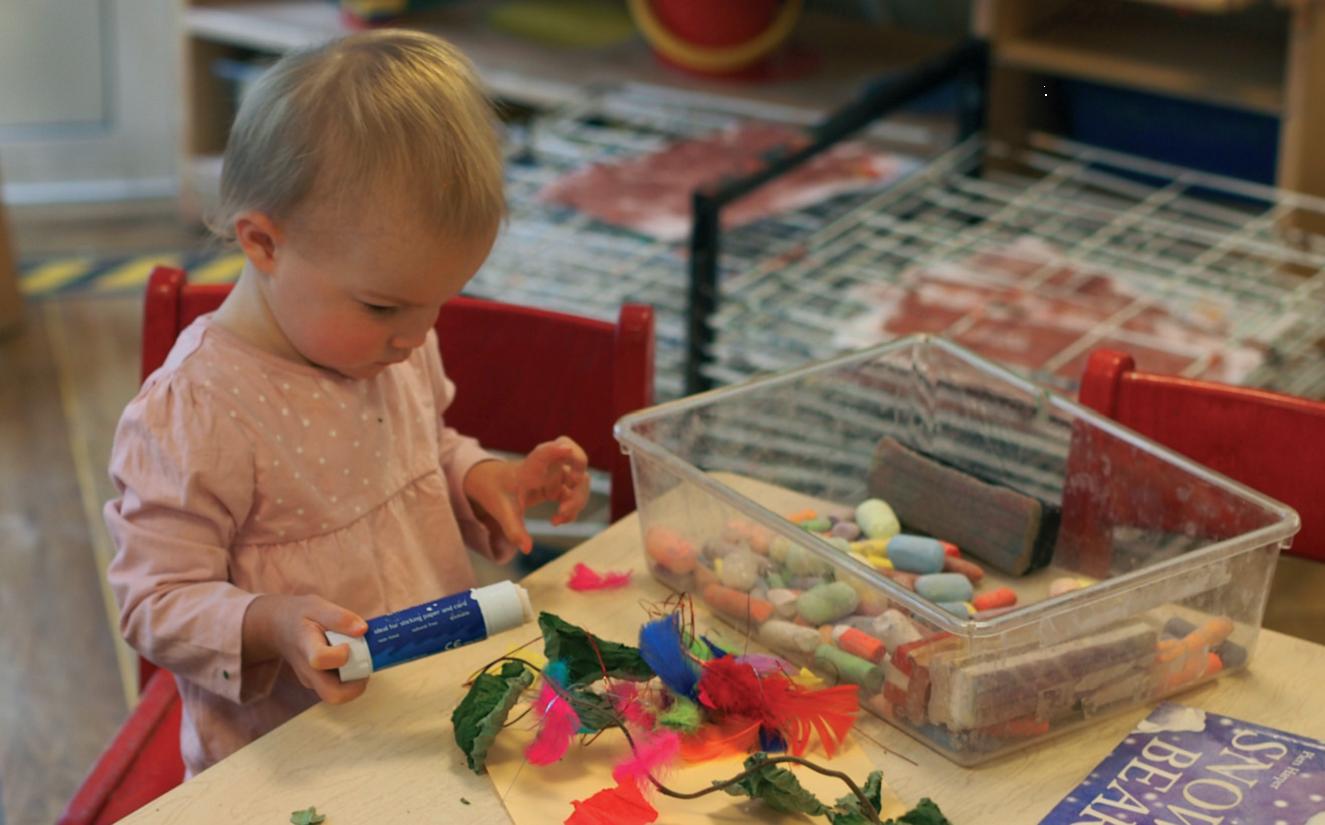Whether it’s making decorations or planning a festive performance, it’s important to provide Early Years children with the chance to explore their creativity during Christmas activities, says Judit Horvath…
Christmas time with young children is a magical experience, as they encounter all of its wonders: the expectation of waiting and counting the days till Santa Claus’s visit, the years of tradition there are to explore.
During this time of year – from as early as the beginning of November – early years settings can become hives of activity and parental involvement, as children work through Christmas arts and crafts activities, stories and tales, and rehearse performances for the eyes of proud relatives.
At Olympus KeyMed Day Nursery, our practitioners offer many educational opportunities to children, in order to help them to understand the real meaning of Christmas: being together, cherishing the love of family and friends and celebrating belonging.
Early years settings, however, need to review carefully the activities they offer during the Christmas period. At our nursery, we have close to 20 years of practice behind us, but after we reflected upon what it was exactly that children were being asked to do, we decided to change our methods.
It was important to us that all children were encouraged to be creative and independent in their learning and choices.
Being creative in our nursery means to observe freely, experiment happily, explore with interest, imagine, plan and create masterpieces by choice – rather than, for example, colouring predetermined outlines, using only red paint, and sticking pre-selected, universally square-shaped pieces of fabric onto pre-cut card, so adults can skilfully turn them into Christmas symbols in a bid to create the so-called ‘Christmas spirit’!
We have decided to follow a different approach and offer early years Christmas activities as continuous provision that develop creativity, where children can study materials and make informed choices when engaging in art activities.
There are six stages in the process we use to enable children to unlock the creativity of the festive period…
Firstly, we provide the children with information about Christmas, through books, movies, stories and objects, so they gain an insight into the celebration – a basic understanding about its meaning – and may be able to recall memories (depending on their age), or create new ones.
As the next step of the process, we offer the children a wealth of materials to explore and experiment with. We provide each child with a personal container and encourage them to select things that they like or prefer.

Through this Christmas activity, early years children understand that each material has unique characteristics and the exploration gives them an idea of how different materials behave.
This provocative activity stimulates children’s imagination and their communication, interaction and sharing is a natural outcome.
Whilst children are spending some time exploring these materials, we adults are observing the children touching, smelling, collecting, rejecting, choosing, throwing, selecting and sharing them.
By closely examining their reactions, we can determine what they like, what they remember, what they want and what they do not want, as they carefully examine objects one by one. Spending ample time observing the children significantly shortens our planning time.
Now the children express their reactions to, and views about, the materials via collections, arrangements and sometimes verbal narratives.
They start to arrange the goods and form their ideas about their usage in play. We often see an incubation or ‘wondering’ period occur here, during which the children process the information they have gathered.
As a typical next stage of the process, we gather the children and plan Christmas activities/room designs together. By this stage in the process, our early years children possess a range of information via the information received from adults and from their exploration, so they are able to translate their knowledge into practical, new ideas.
In the final stage of the creative process, we facilitate the Christmas activities that our early years children choose by providing them with various festive images and materials, sharing simple versions of the story of Christmas, and giving them plenty of time to create their very own magical Christmas experiences.
Through these, children make connections, enhance memories and develop an awareness of the culture of the celebration.
The possible applications of the creative process outlined above are limitless. When our nursery prepares for Christmas, we involve the children in all stages of planning, preparation and decoration.
We organise cookie swap mornings, recipe sharing, Christmas table design sessions, Christmas tree decoration courses, in all of which the children take the leading roles, becoming, for example, event planners, trainers, DJs and caterers.
Our annual Christmas Show is planned following the steps of the creative process, too. We introduce the subject of Christmas to the children via storytelling, books, images and movies, and based on their conversations we record the story of the children’s performance.
We also record the story told by the children – therefore both the script and the narration are unique and personal.
The EYFS states that ‘Practitioners must consider the individual needs, interests, and stage of development of each child in their care, and must use this information to plan a challenging and enjoyable experience for each child in all of the areas of learning and development.’
This, during the festive period at an early years setting, simply means that to fully experience the magic of Christmas, it’s important for children to immerse themselves in the festivities and become involved with as much as they can, rather than only following adult-led activities.
For children, part of the reason why Christmas is so magical is because everything is new and exciting. So, instead of getting swept up in the clichés of Christmas, try to recapture that sense of wonder by indulging in the free-flow of creativity – in this way, new and exciting and meaningful Christmas memories will be guaranteed.
Judit Horvath managed an ‘outstanding’ nursery in Essex. Now based in Hungary, she is an author and nursery management consultant.
